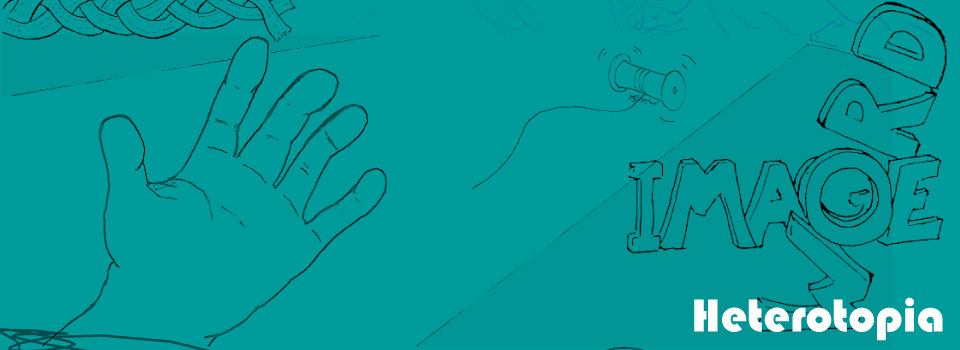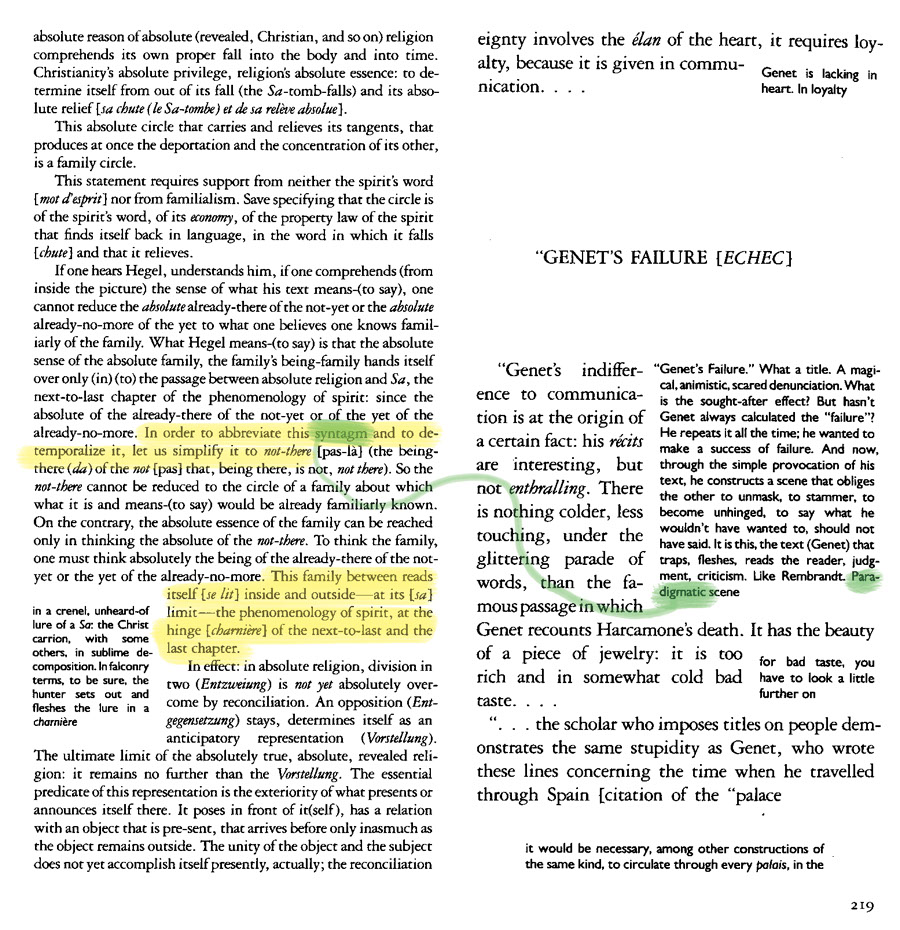
x
Contents
Home
Home
Home

La Question du Texte Comique
Derrida’s central interpretive metaphor is play, the allusions and illusions of the text, but to what purpose? “The practice of play in Mallarmé’s writing is in collusion with the casting aside of ‘being’” (Dissemination 216). Play avoids is. We must remember that play is always already sexual, the playsure of the text. Play is the proper act of the bed:
In this perpetual allusion being performed in the background of the entre that has no ground, one can never know what the allusion alludes to, unless it is to itself in the process of alluding, weaving its hymen and manufacturing its text. Wherein allusion becomes a game conforming only to its own formal rules. As its name indicates, allusion plays. But that this play should in the last instance be independent of truth does not mean that it is false, an error, appearance, or illusion. (216)
To play is to act, to screw, to lie. The central margin of Glas creates the excluded muddle that exists only in silent collusion between author, reader, and text. Play, as Derrida suggests, is allusion and illusion. But it is also elusive.
Derrida began his essay with an unstated promise of developing the relation between image and text, a promise that lies undelivered. The entire essay is an attempt to elude that which is always already excluded in text: image. Perhaps his brother could have drawn more compelling conclusions.
Viewing a text such as Glas as visual seems perverse, to say the least. There are no illustrations, no drawings, no images, and the visual makeup of the page carries minimal significance.
However, at a critical moment in Glas, Derrida raises another binary by playing across the gutter:

or figure?


